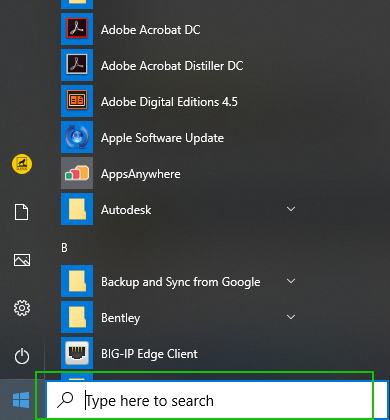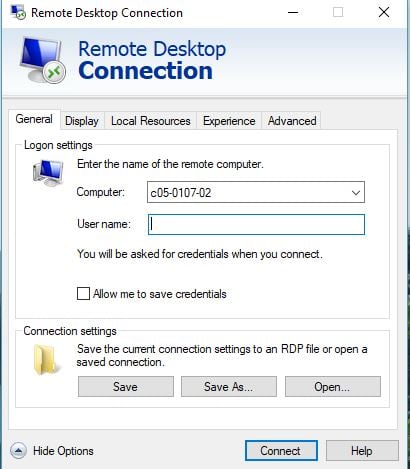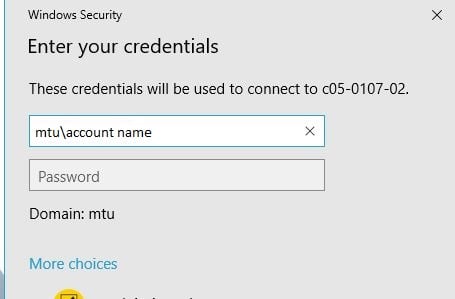This document outlines things to consider if you are working from a remote location. We highly recommend using Remote Desktop functionality, because it can directly connect to your existing desktop so that you have all of the software and network drives you are used to. If you need any assistance with the areas discussed below, we can help.
Forwarding Your Desk Phone to Your Cell Phone
Remote Desktop - from Windows to Windows
Remote Desktop - from Mac to Windows
Mounting Your Network Drives from Home
Duo Two-Step
Duo Two-Step is needed to access resources on campus. Duo is used to connect to the VPN server, Experience, Canvas, Banner, and other applications. You may normally have had your office desk phone setup to be your two-step verification. If that is the case, you need to add another device besides your desk phone while you are still at your desk phone.
How to Add Additional Devices to Duo
Find more information about How Duo Two-Step Login works.
Voicemail to Email
We can set up your Michigan Tech desk phone to send all voicemails to your email. The voicemail will arrive as an attachment that you can download and play as an audio file.
How to request Voicemail to Email
Access Voicemail Remotely
- From off campus, call your office number.
- While your outgoing message is playing, press *.
- Enter your passcode when prompted.
- Once you enter your passcode you’ll be able to listen to messages as well as update your outgoing message.
Forwarding Your Desk Phone to Your Cell Phone
There is an option to allow you to forward your Michigan Tech desk phone (487-XXXX) to your cell phone. Note that this is either on or off, so anyone calling after hours will still be forwarded to your cell phone.
This may also incur long distance charges to your department depending upon the number of your cell phone you are forwarded to.
We recommend most people choose voicemail to email as the best option.
To set this up, please email it-help@mtu.edu this request, we will need your office number to forward (487-XXXX) and the full number to forward your phone to.
Using the Campus VPN
The campus VPN gives you a secure connection from your remote location to campus. A VPN connection is needed to do things like connect to a campus computer with remote desktop. The following links provide instructions on how to connect to the VPN based on operating system:
Remote Desktop - from Windows to Windows
Faculty, staff, and students must first request remote access for their office or private lab desktops by contacting Michigan Tech IT. To gain remote access to your office or private lab computer, note the name of your computer (follow these instructions) and email IT at it-help@mtu.edu or call 906-487-1111.
Once you've been granted remote access and have the name of your computer, you can proceed. When you are remote, i.e., not on campus, the first step is to connect to the VPN (VPN instructions for Windows).
Next, you will use a remote desktop program to connect to your office computer
- Open remote desktop by going to the start menu and typing Remote Desktop Connection.

- Enter the name of the computer you're trying to connect to, for example, c05-0107-02.ad.mtu.edu.

- For the MTU domain, the account name must be entered in the format: mtu\account name

- Select Connect.
- You may receive a warning that “The identity of the remote computer cannot be verified” Select Yes.
- Connection is now complete.
Remote Desktop - from Mac to Windows
Connecting from a Mac to a Windows-based work desktop is as straightforward as it is from Windows to Windows.
When you are remote, i.e., not on campus, the first step is to connect to the VPN (VPN instructions for Mac).
Follow the instructions at How to remotely connect to a campus Windows PC from a Mac.
Mounting Your Network Drives from Home
You can mount your home drive and multidrive remotely once you’ve connected to the VPN. Learn how to at: Connecting to your M:\drive from an Off-Domain Windows 10 computer.
Zoom
You can use Zoom for conference calls, office hours, live lectures, and learning center support. All faculty, staff, and students have access to Zoom using their Michigan Tech account credentials at michigantech.zoom.us.
Zoom Help Center:
https://support.zoom.us/
Zoom Live Training Webinars:
https://support.zoom.us/hc/en-us/articles/360029527911-Live-Training-Webinars
Zoom Meeting Security
Zoom has several features designed to help prevent your meeting from being disrupted by uninvited guests. The following options can be defined when you set up or edit an existing meeting.
- Require Meeting Password—This setting allows you to set a password for your meeting. The most important thing you can do to help protect your meeting is to keep the meeting invite and password (if used) private. Share the meeting password privately with your participants. Don’t post it to social media or public websites where uninvited guests can find and misuse it.
- Waiting Room—This option puts participants in a staging area, where they wait until the host invites them into the Zoom meeting. This gives the host more control over who is joining and the ability to keep out uninvited guests. This option works better for small meetings but can be customized to accommodate larger groups.
- Authenticated Users—This option requires users to sign into Zoom to join your meeting. While this is
more secure than a public meeting, it still has risks; uninvited users who are logged
into Zoom can still join your meeting.
If you are using the Zoom desktop application, the waiting room and authenticated user options are located under Advanced Options.
For security reasons, the screen sharing ability on Michigan Tech’s Zoom account is set by default to host only. This can be changed for your meeting by selecting the arrow next to Screen Sharing at the bottom of the meeting window. You can change this for your events in your settings at the Michigan Tech Zoom Page.
Zoom addresses these concerns and features in a blog post that includes related articles and how to use these features.
Getting Help
We can help. Michigan Tech IT will continue to monitor email to it-help@mtu.edu and phone calls to 906-487-1111.